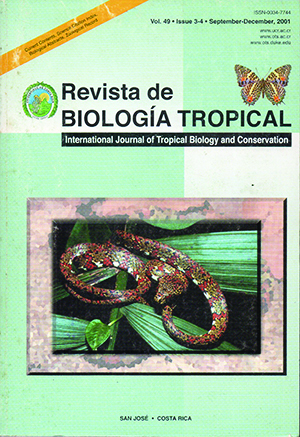Abstract
In order to maintain rotifer populations during periods of low algal production, it is necessary to offer alternate diets, some of which include forms of preserved algae. The present work is based on the effect of live and dead Chlorella vulgaris on the population growth of Brachionus calyciflorus and Brachionus patulus. The experimental design consisted of three algal levels (0.5x106, 1.5x106 and 4.5x106 cells ml-1) offered in three forms (living, frozen and heat-killed). The maximal population density values for B. calyciflorus ranged from 55±1 ind. ml-1 (at 0.5x106 cells ml-1) to 471±72 ind. ml-1 (at 4.5x106 cells ml-1) with live Chlorella, but was much lower (6±1 to 26±6 ind. ml-1) with frozen or heat-killed alga under comparable food levels. However, the maximum population density of B. patulus under live or or heat-killed Chlorella was similar at comparable algal levels but when offered frozen algae it was four times less. The highest mean peak population density was 1 227±83 ind. ml-1 under 4.5x106 cells ml-1. The rate of population increase for B. calyciflorus varied from 0.50 to 0.79 using live Chlorella, but under comparable conditions, this range was lower (0.21 to 0.31) for B. patulus. Results have been discussed in light of possible application for aquaculture
##plugins.facebook.comentarios##

This work is licensed under a Creative Commons Attribution 4.0 International License.
Copyright (c) 2001 Revista de Biología Tropical
Downloads
Download data is not yet available.


